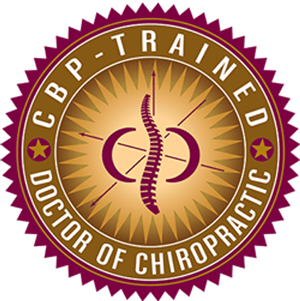FAQ
FAQ
Frequently Asked Questions

Is chiropractic safe? Is this right for you?
In recent years, the field of chiropractic has received considerable attention regarding treatment safety. However, since the mid 1970s there have been advances in research recognizing chiropractic as a safe and effective form of treatment. In fact, today the profession has a well-established safety record and its malpractice insurance rate is among the lowest of all fields of health care. But like any form of treatment, all risks – however slight – should not be ignored.
While the methods used by chiropractors have proven to be safe in almost all cases, certain conditions may put patients at risk. To reduce the possibility of complications, chiropractors will evaluate their patients to determine if treatment will cause an adverse reaction. A particular concern is vertebral arter3 syndrome (VAS), a condition that occurs when sudden head movements disrupt the blood flow in the vertebral artery, possibly leading to a stroke. However, it should be noted that the risk of complications is extremely remote; according to the 1996 RAND report, only one out of every million patients experiences VAS. The risk of VAS can be diminished significantly with a proper examination before manipulation.
Even for patients with aneurysms, tumors, bone infections or any other condition that increases the chance of complications, treatment is not completely off-limits. Often times, chiropractors will modify treatment to better suit the patient and further reduce the possibility of harm.
Research shows that chiropractic treatment has proven to be safer than many medical procedures. Consider, for example, a mortality rate of 6,900 per one million for patients undergoing cervical spine surgery, whereas for cervical manipulation by a chiropractor the rate is a mere 0.3 per million. Likewise even the most conservative medical treatments, such as over-the-counter pain relievers, can carry significantly greater risks than chiropractic care. Studies show that 1,000 out of every one million patients taking pain relievers like Aspirin experience serious gastrointestinal disorders. In preventing complications caused by spinal manipulation, there is no better ally than a skilled chiropractor with sound knowledge of the patient’s condition. Under the care of a properly trained chiropractor, spinal manipulation is a safe and effective form of treatment for a variety of aliments.
There’s nothing mysterious about chiropractic. It’s a natural method of health care that focuses on correcting the causes of physical problems, rather than just treating the symptoms. Chiropractic is based on a simple but powerful premise. With a normally functioning spine and healthy nervous system, your body is better able to heal itself. That’s because your spine is the lifeline of your nervous system. It controls feeling, movement, and all other bodily functions.
Chiropractic works by restoring your body’s natural ability to be healthy. When under the proper control of your nervous system, all the cells, tissues, and organs of your body are designed to resist disease and ill health. The chiropractic approach to better health is to locate and remove interferences (subluxations, misaligned vertebrae) to your nervous system. With improved spinal function, there is improved nervous system function. The goal of the chiropractor is to remove interference that may be impairing normal health through specific chiropractic adjustments, allowing your body to heal itself. A healthy spine and a healthy lifestyle are your keys to optimal health!
Doctors of Chiropractic are highly educated. Chiropractic education and medical education are similar in many respects and different in others because chiropractors do not prescribe drugs or perform surgery, and medical doctors do not correct vertebral subluxations. Rhode Island chiropractors must have a minimum of eight years of college. Each chiropractor must have a four-year undergraduate degree including “pre-med”, followed by a four year Doctor of Chiropractic (D.C.) Degree. Each chiropractor then passes the demanding five part National Board Examinations. Doctors of Chiropractic then apply to a governmental licensing board before being granted the privilege to practice. A chiropractor’s education, however, never ends. Doctors of chiropractic complete regular postgraduate instruction for license renewal and to stay current on the latest research and advances in the profession.
A chiropractic adjustment is the art of using a specific force in a precise direction, applied to a joint that is not moving properly. The purpose of this procedure is to eliminate interference to the nervous system, increase range of motion, reduce pain, and improve spinal function and overall health.
A spinal subluxation is like a dental cavity you may have for a long time before symptoms appear. That’s why periodic spinal checkups are so important. Although it may be possible to know you have a subluxation, it is rarely possible to be sure you don’t. Regular spinal checkups are always a good idea, and they promote good health from the inside out.
Many childhood health complaints that are brushed off as “growing pains” can be traced to the spine. Having early chiropractic evaluation may prevent health problems that emerge in adulthood. Many parents report that their children enjoy their chiropractic adjustments and are healthier than their peers.
No. The doctor evaluates each patient’s unique spinal problem and develops an individual course of care. Each chiropractic adjustment builds on the one before. The resulting recommendations are based upon years of training and experience. Each patient’s care is uniquely different from every other patient.
Actually, adjustments do not always produce a sound. Often, however, adjustments do create a “cavitation” or “popping” sound. The sound is caused by gas rushing in to fill the partial vacuum created when the joints are slightly separated. This sound is painless and totally harmless.
No. Since a chiropractic adjustment is a specific force, applied in a specific direction to a specific joint, it is virtually impossible to adjust oneself correctly and accurately. It is possible to turn or bend or twist in certain ways to create a “popping” sound that sometimes accompanies a chiropractic adjustment. Unfortunately, this type of joint manipulation is usually counterproductive, often making an already unstable spine even unstable, and can sometimes be dangerous. Adjusting the spine is not for amateurs!
No. If only it were, there would be more healthy people around and chiropractors would not get patients who last saw a chiropractor a few years ago when their back went out. It is possible to get used to feeling more balanced, less stressed, and more energetic as a result of regular chiropractic care. Chiropractic is not addictive; good health is.
Yes. It’s an unfortunate fact that up to half of those who have had spinal surgery discover a return of their original symptoms months or years later. They then face the prospect of additional surgery. This too common occurrence is known as “Failed Back Surgery Syndrome.” Chiropractic may help prevent repeated back surgeries. In fact, if chiropractic care is initially utilized back surgery can often be avoided in the first place.
No. However, chiropractic care is successful with a very wide variety of health problems not necessarily considered “back” problems because of improved nerve system function. With a normal nerve supply the body’s natural healing capacity can improve a variety of health problems.
Anytime is a good time for a better functioning nerve system. Pregnant mothers find that chiropractic adjustments improve their pregnancy and make delivery easier for themselves and their baby. Adjusting methods are always adapted to a patient’s size, weight, age, and condition of health.
Chiropractors base their care on the detection, correction, and prevention of vertebral subluxations (spinal misalignments). We use specific spinal adjustments to correct the spine, to improve nerve system functions and reduce nerve interference. Osteopaths use drugs, surgery, and other traditional medical therapies and occasionally use manipulative procedures to increase joint flexibility.
Chiropractors take x-rays to reveal the internal structure and alignment of the spine. We are also concerned about underlying disease processes and disorders of the spine such as spinal deterioration, arthritis of the spine, abnormal development, bone spurs, disc disorders, tumors and spinal curvature. Additionally, X-rays provide a blueprint for correcting the spine back to optimal health and alignment.
No. Exercise is an important part of good health, yet without normal spinal function a physical workout merely puts additional wear and tear on improperly functioning spinal joints.




